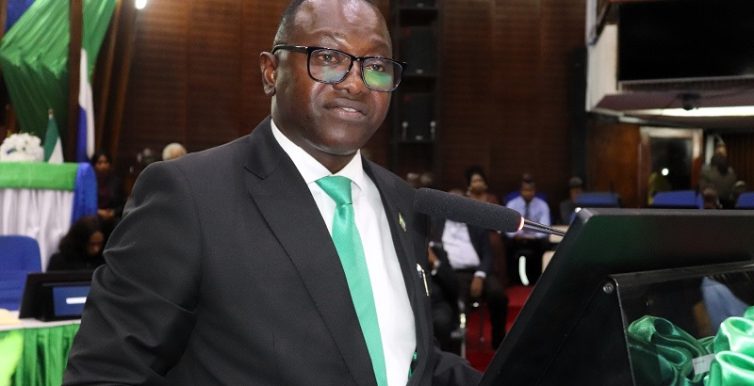The Public Debt Management Division in the Ministry of Finance has on Monday 21st, August 2023, started a Five-day workshop to update the Medium-Term (2023-2028) Debt Strategy, which aims at reducing the cost and risk of the existing debt portfolio consistent with the national debt strategy in the country.
The Programme held at the Leisure Lodge, Aberdeen, Freetown, has participants from the National Revenue Authority, Bank of Sierra Leone, Statistic Sierra Leone, National Mineral Agency (NMA), University of Sierra Leone and Civil Society Organizations to deliberate and analyze the existing debt, financing need, intent and exchange rate, and potential financing strategies.
The Senior Deputy Financial Secretary (SDFS) Samuel E.B Momoh, who, on behalf of the Minister of Finance official opened the workshop, stated that public debt is amongst the most topical issues of global economic discussions today, noting that debt has been associated with three main challenges such as volatile economic growth, high inflation and persistence of global shocks, especially the Russian-Ukraine war.
He continued that the stock of disbursed outstanding public debt, including verified domestic arrears, has reached NLe 51.70 billion, estimated at 2.75 billion USD at the end of December 2022, of which external and domestic debt accounted for NLe35.65 billion, 1.9 billion USD and 16.06 billion respectively.
He disclosed that a recent estimate of public debt stood at 98.9 per cent of the GDP as of December 2022 and is projected to average 82.38 per cent of GDP in 2024-2027 under the baseline public debt and macro-economic assumptions.
Samuel E.B Momoh added that the existing Medium Term Debt Strategy (MTDS) of 2021-2025 estimated total public debt was projected to decline gradually with hopes that the economy would expand, export increase, domestic revenue increase and budget deficit narrow in the medium term.
The Senior Deputy Financial Secretary continued to state that most of these expectations turned the opposite as the economy contracted, domestic revenue decreased, and the budget deficit expanded with the new government agenda.
He mentioned that the foundation upon which the last MTDS 2021-2025 was built has changed, and that’s hence the need to update the MTDS to reflect the recent development and design alternative strategies to address the rising debt levels to finance government priorities at low cost and reduce risk.
He mentioned that updating the MTDS 2023-2028 will help improve the Government’s Country Policies and Institutional Assessment (CPIA) rating, translating into additional IDA allocation to Sierra Leone.
In his presentation, the Director of the Public Debt Management Division (PDMD), Mathew Sandy, said that Sierra Leone has now met the International Standards of the MTDS training presentation by the World Bank and the IMF.
He explained that the whole exercise involves eight steps which include the objectives and scope of strategy, cost and risk of existing debt, potential sources of finance, medium-term macro–policy and market environment, broad structural factors and risks, Analysis of alternate debt management strategies, review with fiscal monetary and market authorities and propose and approve the design.
Director Sandy said Fiscal consolidation with efficient spending and innovative ways are significant to reducing debt in the country. He concluded that the updated MTDAS 2023-2028 would inform the financing options for the 2024 Budget and Fiscal Strategy Statement 2024-2028, which would proffer policies for the entire year of delivery on the Big Five (Feed Salone, Human Capital Development, Youth Employment Scheme, Revamping Public Service and Technology and Infrastructure.)
Credit:MoF Communications











